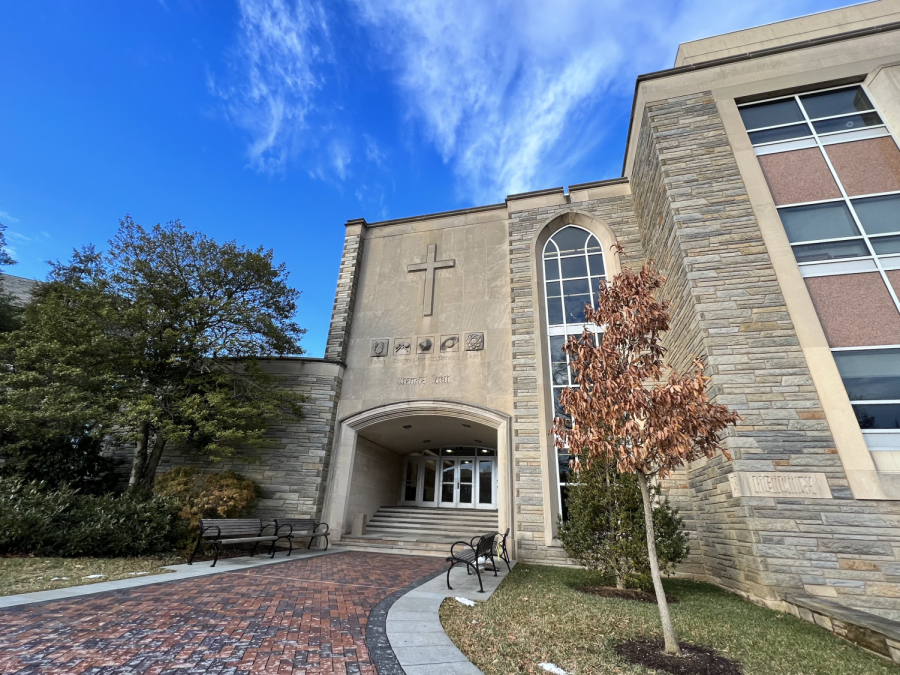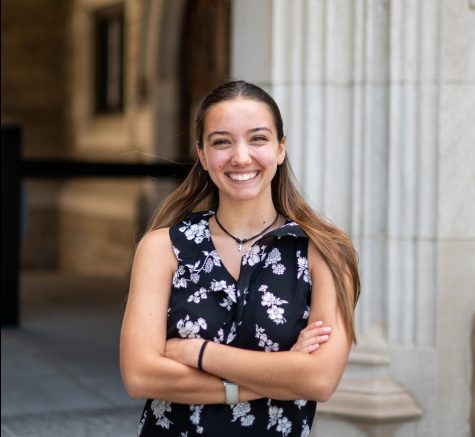Cities Could Learn From the University’s Infrastructure
Villanova recently welcomed Yu-Chieh David Chen to present a biology seminar on “Wiring up the Brain During Development: Coordination and Propagation of Cell Fate Choice in Neural Circuit Assembly.”
October 26, 2022
Sidewalks with weeds clawing their way out of the cracks, pavements that suddenly end in grass and the powerful gust of wind that buffets you every time a car flies by are all common experiences for pedestrians. With the advent of the automobile, urban planning donned a modernist lens. Cities were redesigned to be more “car-friendly” at the cost of other forms of transportation. As the government invested in highways and multi-lane roads, suddenly public transport became less of a priority. However, there has been a relatively recent pushback against car-centric cities. Instead, post-modernist urban planners advocate for a city design that encourages walkability.
What would a people-friendly city look like, though? Something that we as Villanovans take for granted: a college campus. We have beautiful brick walkways that weave around buildings, bridges that rest over multi-lane roads and shuttles that take us to places where walking is not ideal. As Humnaities Department professor Dr. Margaret Grubiak recounts, this was not always the case. There used to be a time when students and Augustinians drove around campus regularly on what are now the walkways in front of Mendel and Falvey. The sight of a vehicle slowly rolling through campus is not uncommon today, but it was much more of a familiar occurrence before, with traffic being horribly congested and students having to weave around cars to get to class. That is, before Villanova partnered with Venturi, Scott Brown and Associates to implement the Campus Master Plan and renovated campus to include the signature brick paths that we are so used to.
Separating the areas where pedestrians and vehicles occupy is essential in post-modernist urban planning, reducing pedestrian fatalities due to vehicular collisions. Like on Villanova’s campus, this can be things like designating sidewalks for pedestrians, paths for cyclists and building bridges over roads.
Other modifications that cities should implement are narrower streets, slowing traffic and making walking a safer means of transport. Cities and suburbs should be higher density, making it easier for people to walk to the places they need to go. Among the many ways to increase density, stopping the practice of having lawns is one of the most important. Not only do lawns unnecessarily occupy space, they are detrimental for the environment, requiring massive amounts of water and nitrogen-based fertilizer.
However, walking is not always the best way to get around, whether it be for work, school or anything else that is too far. Just like Villanova’s shuttle system, public transport is an important aspect of city life. Owning a car is not a financially feasible option for many people, leaving public transport as their only alternative.
A walkable living environment would contribute to the fight against climate change, reducing our carbon footprint by walking rather than taking a car. It fosters a sense of community as people are in close proximity to each other and can slow down and get to know the people they see every day (much like college life). In fact, this close-knit feeling is what many people miss when they graduate. The health benefits of walking would combat the obesity epidemic gripping our nation as well. With the benefits of walkable cities being innumerable, urban planners should consider adopting these policies in renovations to come.



